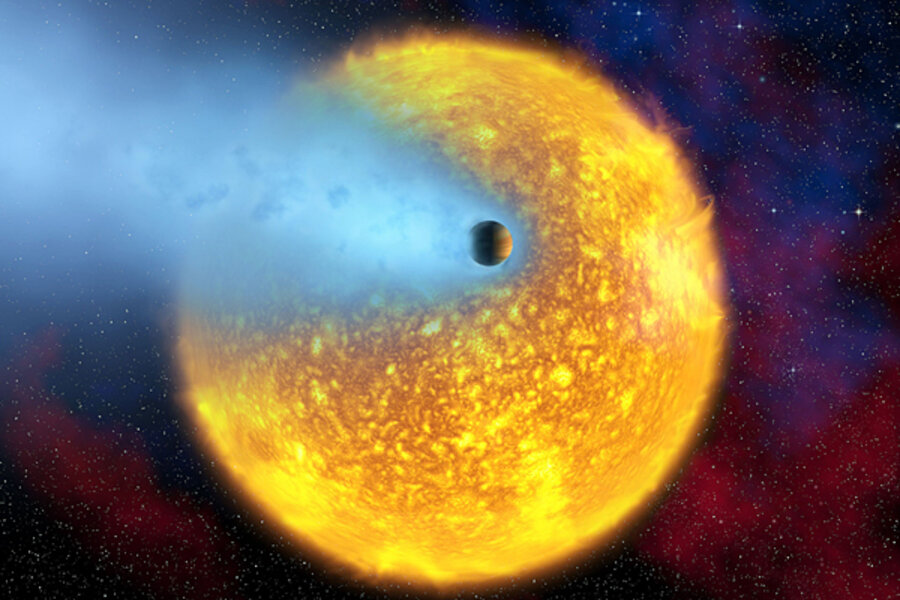Huge flaming planet has a tail like a comet
Loading...
A blazing hot planet orbiting another star is sporting a long tail like a comet, astronomers using the Hubble space telescope have discovered. The alien world, unofficially nicknamed Osiris, is so close to its own sun that powerful stellar winds are sweeping its atmosphere out behind it.
It lies 153 light-years away from Earth and is slightly less heavy than our own biggest planet Jupiter. But it is constantly being roasted by its star as it speeds around it once every three and a half days.
Compare that to our own innermost planet, Mercury, which takes 88 days to orbit the Sun.
Officially labelled HD 209458b, the planet was first detected in 1999 when it passed in front of the star in the constellation of Pegasus, causing a tiny dip in the star’s brightness. Last month, astronomers reported that a superstorm was raging on the planet.
Now astronomers have used observations of subsequent transits to study the structure and chemical make-up of the world’s atmosphere by examining how starlight passes through it.
Studies with a Hubble instrument called the Cosmic Origins Spectrograph suggest powerful stellar winds are sweeping the cast-off atmospheric material behind the scorched planet and shaping it into a comet-like tail.
The instrument detected the heavy elements carbon and silicon in the planet’s super-hot 2,000 degrees F (1,100 C or so) atmosphere. This detection revealed the parent star is heating the entire atmosphere, dredging up the heavier elements and allowing them to escape the planet.
Jeffrey Linsky, of the University of Colorado, who led the study, said: “We have measured gas coming off the planet at specific speeds, some coming toward Earth. The most likely interpretation is that we have measured the velocity of material in a tail.”
But although this extreme planet is being roasted by its star, Linsky believes it will not be destroyed anytime soon. “It will take about a trillion years for the planet to evaporate,” he said. The research is reported in the Astrophysical Journal.
A report last year claimed that HD 209458b had the basic ingredients for life in its atmosphere, although its physical circumstances would make it seem impossible for any life as we understand it to exist there. It followed previous claims of the detection of water.
• Discover space for yourself and do fun science with a telescope. Here is Skymania’s advice on how to choose a telescope. We also have a guide to the different types of telescope available. Check out our monthly sky guide too!
Paul Sutherland blogs at Skymania News





